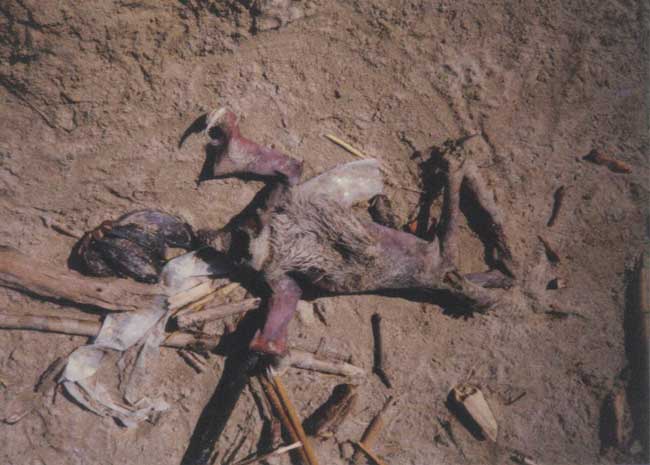'Montauk Monster' is a strange creature that landed on a beach in Montauk, New York, June 2008.
A photo of this strange animal was spread online and became the subject of national media. Some people think it's a hoax, some say that the picture shows a common animal. Some argue that it looks like a pig, while others claim that this animal is the result of 'biological warfare'.
This week, reports of another Montauk monster are spreading online.
In both cases, ordinary animals are likely possibilities. In the previous issue, there were discussions about animal diseases such as scabies in animals that could create 'monsters' , such as turning sick dogs into terrifying blood-chupacabra. . The same process happens with rotting animals deformed by decay, predators or swellings.
Sea monster corpses
In April 1977, a Japanese fishing boat off New Zealand pulled up a large and strange animal carcass. According to the fishermen on the ship, it weighs 4,000 pounds and no one can identify it. It seems like there are fins. Long neck and tail. All of the organs have disappeared, but some of the meat and fat remains intact. Some pictures of this strange animal were taken and appeared in books about mysterious animals as proof that the fishing boat caught a sea monster or a dinosaur. Eventually, this creature is identified as the body of a shark.

On a beach near the Panama border and Costa Rica in 1996, Benjamon Radford discovered a strange creature washed ashore.It has no head and no hair except a part on the chest;it has 4 limbs, a short tail, and large claws at the ends of the hands.The legs are quite slender, and are not like any of these animals I or my colleagues have ever seen.Consider carefully the hand of the strange animal that gives clues about the identity of this monster.Three white claws long and easily distinguishable.Radford realized that this monster was formerly a common species of the Bradypodidae family but rotted and became a monster's form.(Photo: Benjamin Radford)
Globsters
Many monster enthusiasts believe that large and unidentified corpses are located on the coast of the world as sea monsters. These corpses, often called globsters. is rotting flesh and no bones or distinguishing features. One of the globster corpses was discovered in 1896, when large waves pushed a huge corpse into the coast of St. Augustine, Florida. This six-minute corpse was examined by a local naturalist, who predicted that it might be the largest giant octopus ever known. Many similar cases washed ashore, including in Chile in June 2003, and a case in Newfoundland in 2001. In 2004, scientists analyzed all globster specimens using a microscope. electrons, and DNA, molecular and biochemical analyzes. Conclusion: These globsters are simply rotting whales.
Panama monster
In 1996, I discovered and photographed a Montauk monster on a beach near the Panama and Costa Rica borders. It was a strange animal that was washed ashore and burned by the tropical sun. It has no head and no hair except a part on the chest; it has 4 limbs, a short tail, and large claws at the ends of the hands. The legs are quite slender, and are not like any of these animals I or my colleagues have ever seen. Consider carefully the hand of the strange animal that gives clues about the identity of this monster. Three white claws long and easily distinguishable. I realized that this monster was formerly a common species of the Bradypodidae family but rotted and became a monster's form.
What is Montauk Monster?
The scientific conclusion is that it is a child . a North American panda. Darren Naish, an English anthropologist, examines the photos of the animal and concludes it is a North American panda.
Naish said: 'The Montauk monster has a strange appearance due to partial decomposition. The likelihood of soft tissue in the nose disappearing early when decomposing cih that the 'beak' is just the area of the nose that has been decomposed. The match with a panda is very clear where we compare teeth and symmetry. The animal has lost its fangs and teeth (you can clearly see empty pores), and the panda has very long legs'.
This year's monster may also be a panda, or some normal animal. It is not surprising that people cannot recognize what they observe, because science shows that ordinary decay can create strange monsters.
 'Fine laughs' - Scary and painful torture in ancient times
'Fine laughs' - Scary and painful torture in ancient times The sequence of numbers 142857 of the Egyptian pyramids is known as the strangest number in the world - Why?
The sequence of numbers 142857 of the Egyptian pyramids is known as the strangest number in the world - Why? History of the iron
History of the iron What is alum?
What is alum?